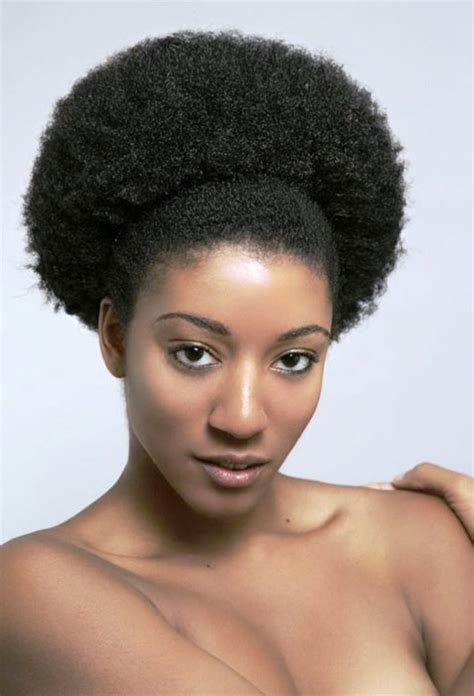African hairstyles have a rich history dating back thousands of years. They are more than just a way to style hair; they are an expression of identity, culture, and spirituality. In recent years, there has been a growing movement to embrace natural black African hairstyles, and for good reason. These hairstyles are not only beautiful but also versatile and low-maintenance.

In this article, we will explore the different types of natural black African hairstyles, their history and significance, and how to care for them. We will also provide some tips on how to choose the right hairstyle for you.
Types of Natural Black African Hairstyles
There are many different types of natural black African hairstyles, each with its own unique history and significance. Some of the most popular styles include:
- Cornrows: Cornrows are a type of braid that is created by tightly braiding the hair in rows. Cornrows can be worn in a variety of styles, including single braids, double braids, and even more complex designs.
- Braids: Braids are another type of popular African hairstyle. Braids are created by interlacing three or more strands of hair together. There are many different types of braids, including box braids, Senegalese twists, and dreadlocks.
- Twists: Twists are a type of hairstyle that is created by twisting two strands of hair together. Twists can be worn in a variety of styles, including Bantu knots, Havana twists, and Senegalese twists.
- Locs: Locs are a type of hairstyle that is created by allowing the hair to mat and form dreadlocks. Locs can be worn in a variety of styles, including freeform locs, two-strand twists, and backcombed locs.
- Natural: Natural hairstyles are hairstyles that are worn in their natural state. Natural hairstyles can include any type of hair, from curly to straight to kinky.
History and Significance of Natural Black African Hairstyles
Natural black African hairstyles have a long and rich history. These hairstyles have been worn by Africans for centuries, and they have played an important role in African culture.
In many African cultures, hairstyles are used to express identity and social status. For example, in some cultures, women who are married wear their hair in a different style than women who are single. Hairstyles can also be used to indicate a person’s age, wealth, or occupation.
Natural black African hairstyles have also been used as a form of resistance. During the transatlantic slave trade, African slaves were often forced to cut their hair as a way to strip them of their identity. However, many slaves continued to wear their hair in natural styles as a way to resist their oppressors.
Today, natural black African hairstyles are a symbol of pride and empowerment. They are a way for Africans to celebrate their culture and heritage.
Benefits of Natural Black African Hairstyles
There are many benefits to wearing natural black African hairstyles. These benefits include:
- Versatility: Natural black African hairstyles are very versatile. They can be worn in a variety of ways, from elegant to casual.
- Low-maintenance: Natural black African hairstyles are relatively low-maintenance. They do not require a lot of time or effort to style.
- Protective: Natural black African hairstyles can help to protect the hair from damage. Braids and twists can help to keep the hair moisturized and prevent breakage.
- Beautiful: Natural black African hairstyles are beautiful. They are a way to express your unique style and personality.
How to Care for Natural Black African Hairstyles
To care for natural black African hairstyles, follow these tips:
- Wash your hair regularly. Wash your hair at least once a week with a gentle shampoo. Be sure to rinse the shampoo out completely.
- Condition your hair. Condition your hair after every wash with a deep conditioner. Leave the conditioner in for at least 20 minutes, then rinse it out completely.
- Moisturize your hair. Moisturize your hair daily with a leave-in conditioner or oil. This will help to keep your hair hydrated and prevent breakage.
- Protect your hair from heat. Avoid using heat on your hair, as this can damage it. If you must use heat, be sure to use a heat protectant spray.
- Trim your hair regularly. Trim your hair every 6-8 weeks to remove split ends. This will help to keep your hair healthy and prevent breakage.
How to Choose the Right Natural Black African Hairstyle for You
When choosing a natural black African hairstyle, there are a few things to consider:
- Your face shape. Some hairstyles are more flattering for certain face shapes than others. For example, if you have a long face, you may want to avoid styles that are too short or too wide.
- Your hair texture. Some hairstyles are better suited for certain hair textures than others. For example, if you have thick hair, you may want to avoid styles that are too thin or too loose.
- Your personal style. Choose a hairstyle that you feel comfortable in and that reflects your personality.
Conclusion
Natural black African hairstyles are beautiful, versatile, and low-maintenance. They are a way to express your unique style and personality. If you are looking for a new hairstyle, consider trying one of the many natural black African hairstyles. You may be surprised at how much you love it!
